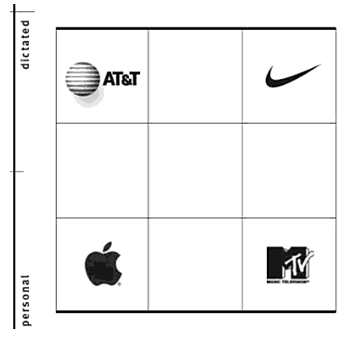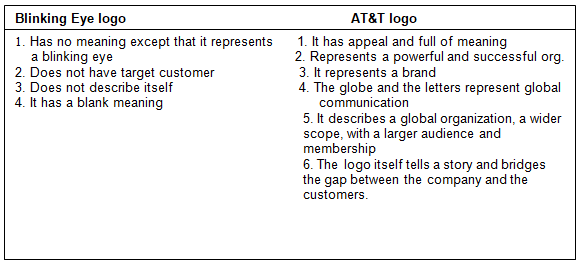Introduction
Marketing involves many areas that include selling, advertising, packaging, transporting, marketing research and much more. A business organization must sell products to survive and to grow. The marketing concept states that an organization should try to provide products that satisfy customers’ needs through a coordinated set of activities.
The major aim of the marketing concept is customer satisfaction. An organization must continue to alter, adapt and develop products in order to satisfy customer preferences. (Jobber & Lancaster, 2003, p. 15)
Organizations in the age of globalization encounter innovations and change and have to adjust with these challenges. One of these challenges includes localization or standardization. Marketing has to be in consonance with these market forces.
Heineken is a brand that carries the name of the company Heineken. Its history traces a family tradition of brewing beer. Heineken is a global firm and has been considered the world’s third largest beer-producing firm. The brands speak for itself: Heineken and Amstel beers are popular in the Netherlands and many countries throughout the world. (Koller et al., 2010, p. 637)
Concepts of marketing, including marketing mix and its various variables, are linked to Heineken. This is a primary objective of this essay.
The Brand and Logo
The Brand
A brand is a name of a product which makes purchasing easier. When a customer buys a product, he looks for the brand since there are many brands in the market that compete with each other. Popular brands easily sell to customers, and customers are mostly loyal to the brand (or brand loyal). When loyalty is attained, there is trust.
A brand becomes a status or a ‘badge’ when it is in the market for a longer period of time. A company can build a long-lasting relationship with a customer through the brand it has developed. Retail brands, on the other hand, are sometimes linked with store loyalty which makes retailers develop relationships with their customers. (Lancaster and Massingham, 2011, p. 319)
The Logo
A logo is not necessarily a communication tool but it can be very effective in motivating consumer perception. Logos and colours are symbols of what a company stands for. A logo is like the flag of a company; it has to be very visible and personalized with a heart in order to create a lasting effect on the people, especially the customers.
Logos are identified to represent a customer-driven organization and designed to bridge the gap between organization and people so that communication is improved. Logos can be emotional or personal like that of Apple. This can help in making advertising and public relations program effective because of the meaning attached to it. (Gobé, 2009)

Example of a logo: The Blinking Eye
The above picture shows a logo which is about the eye or something like an eye blink which has very little meaning. Some examples of competitive logos are those of AT&T, Nike, Apple Inc., and MTV.

Examples of competitive brand logos that represent popular brands are shown in the figure above.
All the four logos in this figure represent a powerful brand but for purposes of comparison, we can compare the ‘Blinking eye’ logo with AT&T. The two have distinction characteristics which can be enumerated in the table below.

Brands and logos belong to large and successful companies, but not all large companies have effective brands and logos. There are other which have lousy appeal, and success may not easily attained for that these types of companies.
Another important fact about a logo is that if it has many copycats, it is time it has to be changed to save the company and its name. For example, the beer brand De Beers has so many copycats, such as De Beers Diamond, or De Beers Jewelry that it is not clear anymore who is the original one.
Marketing
Marketing comes from the root word ‘marcatus’ that means merchandise or where people indulge in business transactions. Marketing involves people and place where buying and selling are the major activities.
Marketing was once a subject in management but now it has become a major focus of studies and researches because of its relevance to the existence of a business. Plainly speaking, marketing refers to activities of a marketer or manager. But there are many underlying concepts and factors to make marketing effective.
Marketing is perfectly defined by the role it has in the firm or enterprise: ‘it is the process via which a firm creates value for its chosen customers’ (Silk, 2006, p. 3). A firm has to meet the needs of its customers and has to sell products which provide benefits to the customers.
Marketing Strategy
Marketing strategy can be likened to a recipe. The ingredients are the marketing functions. Different marketing strategies require differing blends of functional ingredients. If a minor ingredient is miscalculated or forgotten, a recipe may not be successful. The same is true of marketing strategy where all functional ingredients depend on each other for success. (Lancaster and Reynolds, 2002, p. 14)
The Marketing Mix
The marketing mix is a conceptual framework that keeps marketing effective. There are different approaches to the marketing mix, e.g. the 4Ps, 5Ps or even the 7Ps.
Marketing variables are of two groups:
- The offering which consists of the product, packaging, service, brand and price; and
- The methods or tools, which consist of the distribution channels, personal selling, advertising and promotion. (Albert Frey, 1961 cited in Smith and Taylor, 2004, p. 7)
These variables combine to become building blocks of a marketing programme. The manager has control over these variables and he/she bases organizational decisions on them, although there are factors to be considered such as the customers, competition and other external uncontrollable factors.
Marketing Mix is composed of marketing tools that target customers. The marketing mix is composed of controllable variables which can be changed or altered, although with certain limits. Prices cannot be changed outright because of government control or regulation.
A product’s size, colour, and design cannot be changed right away because of the costs in introducing the changes; therefore, a product’s characteristics cannot be changed very often. Promotion campaigns also cannot be changed overnight, while people in the company need training and development and cannot be sacked without due process.
Marketing managers must develop a strategy for all the mix variables that matches with the customers’ needs. In doing so, vast information about the target market have to be collected so that those needs can be pinpointed and addressed.
Product
This includes design, packaging, display, brand characteristics.
There are many types of products which can be favourable or unfavourable and can be in the form of an idea, or good or service. A good can be tangible physical object like a box of candies or electronic gadget. Example of service includes delivery of goods, or care delivery to adults with physical impairment.
The product variable deals with researching information about consumers’ needs and wants. The design of the product will depend on the consumers’ product wants. Sometimes a product will have to be altered according to the customers’ changing preferences.
There are some classifications of products, and these are consumer products which are available to satisfy people, and products which are made for industries or companies known as industrial products (business-to-business products). (Lancaster and Reynolds, 2002, p. 25)
Consumer products that are popular in the market are those which consumers want the most. The products are based on consumers want and their characteristics are determined through surveys and researches by private companies doing surveys. Consumer products are divided into four types: ‘convenience, shopping, specialty and unsought products’. (Jobber and Lancaster, 2003, p. 243)
Convenience products include bread or soft drinks. These are inexpensive products bought with little time planning by the customer. The brand is not so much important in buying convenience products, although sometimes they are important and being considered by meticulous customers. Convenience products are sold by retail outlets and small stores.
Shopping products are products bought by customers with planning. Customers look at the stores and brands, including how prices and other features fare in the market. A marketer usually requires few retail outlets in selling shopping products.
These products are purchased less frequently and therefore there is lower inventory but have higher gross sales. Shopping products include appliances and furniture, electronic gadgets, and much more. (Jobber and Lancaster, 243)
Speciality products have unique characteristics and they are prepared by a significant group of buyers who, before doing the purchase, initially plan the purchase. An example is painting by a well-renowned painter or a Cartier watch. Buyers are not concerned with who is selling but the most important thing is there is an outlet selling the product.
Unsought products are those which require aggressive selling. Examples of unsought products are encyclopaedias or life insurance. The sales person takes his selling prowess by trying to convince of the benefits derived from buying the products. (Jobber and Lancaster, 2003, p. 245)
Price
The price customers are prepared to pay determines the level of demand for a product or service which affects the progress of the marketing company and the company’s competitive position in the market place. Price levels have far reaching implications for the national economy. They influence wages, interest rates and government policy. (Lancaster and Reynolds, 2002, p. 28)
Price is not the only factor that affects demand, although in some situations companies have achieved similar levels of service, product quality and promotional support and it has become the major element of product differentiation. However, such companies have usually made major marketing efforts to reach such a state of similarity. (Lancaster and Reynolds, 2002, p. 28)
Promotion – Advertising, sales promotion, personal selling
The promotion’s role in a company varies according to the type of company and the product they sell. The prime objective of promotion is to communicate with people and organizations with the aim of persuading to accept or buy the products of a company.
Most companies hire television or movie personalities to indorse their products. Tiger Woods, for example, is an effective endorser of sports products like golf paraphernalia. NBA stars are hired by firms to communicate the benefits of using some brands.
Sometimes, a marketing strategy is based on promotion, that is why in most consumer markets, promotion is afforded the highest budget allocation among the other marketing mix elements. (Lancaster and Reynolds, 2002, p. 29)
The attractiveness of marketing opportunities is determined by market factors, such as size and growth rate, as well as competitive, financial, economic, technological, social, ecological, legal and political factors. (Jobber and Lancaster, 2003, p. 658)
Advertising is a type of communication where a company pays a mass medium (e.g. television, radio, newspapers, or a website) to transmit a message about the company’s products. Advertising is used to promote products, services, or ideas.
The emergence and popularity of the Internet has provided firms and organizations to introduce and promote their products by creating websites where sometimes company-customer interaction can be conducted.
Heineken has its own state of the art website (Heineken, 2005) where it introduces to the world the many products and services of the company.
Place or Distribution
The distribution or place variable involves warehousing, transportation and service. The firm, or the manager, should be able to provide the product to the customers in the quantities desired and to make the transport and inventory as low as possible. The marketing manager has to have a close collaboration with wholesalers and retailers to be able to provide the necessary inventory control.
The Global Firm Heineken
The company strategy is founded on a marketing strategy known as SWAB, or ‘sell what people actually buy. There are two other strategies Heineken has used, and these are: SWYG or ‘sell what you have got’, and GLOB or ‘sell the same thing globally’ (Doole and Lowe, 2008, p. 278)
Product
As stated in the Introduction, Heineken is a global product of a global organization. The brand speaks for itself; the product is one of a kind expertly brewed beer. Heineken beer has long been the company product since its founding on June 30, 1863 by Gerard Adriaan Heineken. (Heineken, 2005)
Over time, Heineken product has evolved. The company prides itself on a combination of local and international brands but the base is certainly Heineken. The growth of the brand and the company is attributed to an effective and creative management. Management is centralized in order to achieve an effective operation, distribution and coverage.
The product is said to be pure and natural, the ingredients come from high quality mixed malt. While Heineken is its flagship product, an equally important and valuable product is Amstel which has the same pure and natural quality ingredients.
Heineken is ranked number one in countries such as Greece, The Netherlands, France, and all the other major countries and cities in Europe.
Price
It is enough to say that the price of a bottle of Heineken beer is competitive enough because it has stayed on top of all the other competitors. The price is affordable to all sectors of the UK drinking public and in 75 countries around the world. (Heineken, 2005)
In price competition, Heineken management uses price to beat other competitors in the beer market. Price is a factor in the beer sector. Competitors in the beer market change their rice and the lowest is the most profitable. But Heineken does not change its price more often, unlike in other industries. And Heineken has its own market intelligence to know the price of its competitor.
Blythe (2006, p. 446) says: ‘Price also has a strategic element, since price is commonly how products become positioned against other products in the market: undercutting competitors on price is a common way of competing.’
By maintaining a minimum price for a product, a company can lead the market, although not in all circumstances. In so doing, a marketer puts some of his luck in the buyer’s charge, because he/she may withdraw the price cut. Price has different effects on the mind of the buyer. He may or may not take the bait.
Jobber and Lancaster (2003, p. 561) state: ‘Because price has a psychological impact on customers, marketers can use it symbolically. By raising a price, they can emphasise the quality of a product and try to increase the status associated with its ownership. By lowering a price, they can emphasise a bargain and attract customers who go out of their way – spending extra time and effort – to save a small amount.’
Promotion
Heineken uses technology (the Internet) in promotion and advertising.
Heineken website is state-of-the-art, carefully planned and effective and SEO (search engine optimization) is effective; meaning when you search beer, UK beer, or Heineken, it goes out and you can go to the link.
The new Heineken commercial found on YouTube is a hilarious piece of advertising that truly catches one’s imagination and gets you to what boys really want. While the girls go for shoes and clothes and all those stuffs, the boys go for – what else – Heineken beer.
Place or Distribution
Heineken Group is based in the UK but its scope of operations is international. Distributors are present everywhere, in many countries in Europe, the United States, and Asia. When it comes to volume and profitability, Heineken leads all the other brewers.
Distributors come from almost all areas of the globe, spanning 70 countries in 125 breweries by year 2009 alone. This year and beyond, the company has ambitious plans to make its presence in areas where beer hasn’t reached.
Conclusion
The primary aim of this paper is to present the marketing concept in relation to our case study Heineken. Heineken is one of the most successful beer companies in the UK today. It has penetrated the global market and has maintained its lead in the competitive world of beers.
When we enter a supermarket or a mall to look for items or products we need at home or in school, we see different prices attached to them. Products bear the brand and logo of the company that produce them.
Price varies on every product, say for example, home appliance like television which has different prices; some are high, some are so low. The prices depend on the brand, type, or quality, etc. The more popular the product is, the higher the price, albeit there are high-quality products with lower prices.
Marketing mix variables are applied to Heineken and we can say that Heineken is on the advantage in the competition. All marketing mix variables have played significant roles in the success of the competition.
References
Blythe, J., 2006. Principles & practice of marketing. London: Thomson Learning.
Doole, I. and Lowe, R., 2008. International marketing strategy: analysis, development and implementation. London: Cengage Learning EMEA.
Gobé, M., 2009. Emotional branding: the new paradigm for connecting brands to people. New York: Skyhorse Publishing Inc.
Heineken, 2005. Heineken history, profile. Web.
Jobber, D. and Lancaster, G., 2003. Selling and sales management (sixth edition). England: Pearson Education Limited.
Koller, T. et al., 2010. Valuation: measuring and managing the value of companies. United States of America: John Wiley & Sons, Inc.
Lancaster, G. and Massingham, L., 2011. Essentials of marketing management. USA and Canada: Routledge.
Lancaster, G. and Reynolds, P., 2002. Marketing made simple. Great Britain: Butterworth-Heinemann Publications.
Silk, A., 2006. What is marketing? United States of America: Harvard Business School Publishing Corporation.
Smith, P. and Taylor, J., 2004. Marketing communications: an integrated approach 4th Ed. United Kingdom: Kogan Page Limited.
YouTube, n.d. Heineken commercial on YouTube. Web.